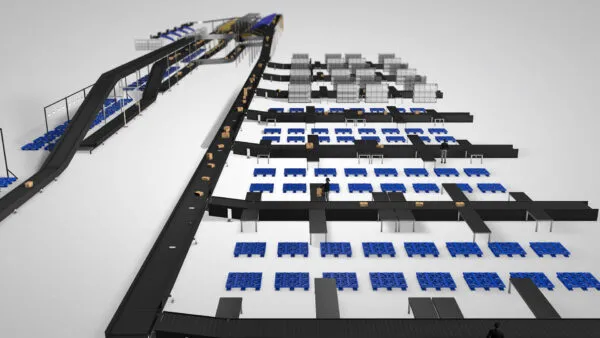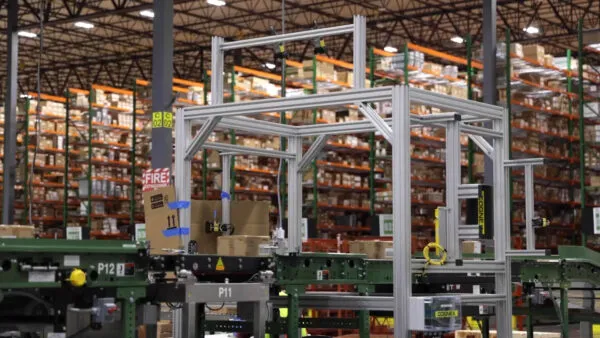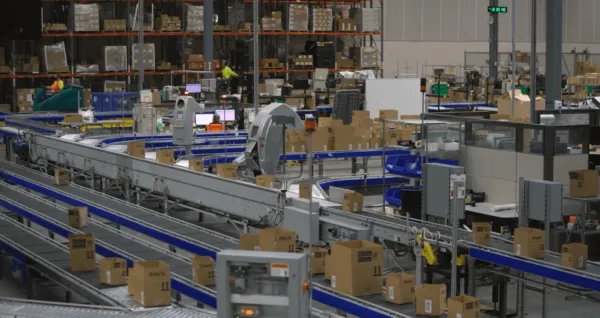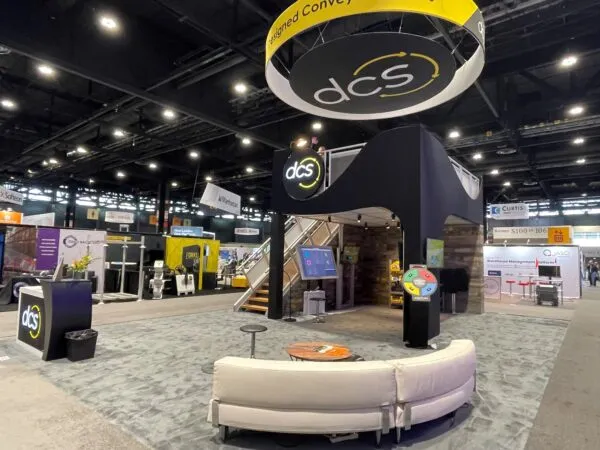Over the past decade, consumers have embraced e-commerce as a more efficient way to compare prices and availability among retailers — and, thanks to the Amazon effect — often with fast, free delivery. Yet, in retail distribution center operations, what benefits consumers comes with operational costs. Transportation and fuel expenses are rising, as are labor costs. Therefore, companies must fine-tune the efficiencies within their retail distribution center operations and processes. This ensures peak performance — satisfying customer expectations for fast delivery while minimizing costs.
According to the 2024 MHI Annual Industry Report, “The Collaborative Supply Chain: Tech-Driven and Human-Centric,” 55% of supply chain leaders — including those in retail — have increased their automation budgets. The report found that 88% plan to spend more than $1 million on new technology, and 42% will spend more than $10 million.
The goal is not to replace labor, but rather to leverage these technologies in a way that enhances worker efficiency as they fill orders within retail distribution center operations. Utilizing automated solutions can reduce dependency on labor while simultaneously increasing inventory throughput and order processing speed. This helps retailers remain both competitive and profitable. Yet many retailers have been reluctant to invest in these solutions, leaving them with equipment and processes that are inefficient and outdated.
When considering an operational process optimization, it can be helpful to engage an independent, unbiased, third-party consultant like Waller & Associates. The consultant examines the processes within a retail distribution center, as well as data about inventory, demand, and more, to identify areas for improvement. Based on that assessment, the consultant makes recommendations about the optimal mix of improved processes and automated solutions to boost inventory management accuracy, speed up order fulfillment activities, and enhance labor productivity.
Improving Inventory Management Accuracy
Inaccurate inventory management means unhappy customers. If a retailer’s online storefront indicates an item is in stock when it’s actually on backorder, the customer who purchases that product will have to be informed of the mistake. That creates a negative shopping experience and damages the retailer’s credibility. Additionally, with so many online options, the disappointed customer will likely switch to a different retailer and may never return.
Because there are multiple costs associated with inventory within retail distribution center operations, accurately managing it is essential to a healthy bottom line. Inventory that isn’t moving increases holding costs. Stale or overstocked inventory are at risk of becoming obsolete and will likely need to be discounted potentially leading to a loss.
Implementing automated solutions such as artificial intelligence (AI) supports more precise demand forecasting and planning. This helps prevent both stockouts and overstocks. Likewise, adding automation for item storage and fulfillment can improve inventory management accuracy. For example, by utilizing an automated storage and retrieval system (AS/RS) to conduct cycle counts continuously as items enter and leave the solution. Instead of sending associates through the aisles to count cases and eaches, associates at goods-to-person picking workstations are prompted to verify the contents of the tote, improving accuracy in retail distribution center operations.
Another way to enhance inventory management is through the deployment of a robust warehouse management system (WMS). This software provides real-time inventory visibility, as well as supports velocity analysis. Also known as an ABC analysis, this assessment determines how quickly an item moves through the warehouse. Identifying and categorizing inventory as fast (A), medium (B), or slow (C) moving enables proper allocation into different areas of a DC. Placing A movers in highly accessible forward pick zones, B movers in automated systems, and C movers in distant storage areas helps speed order fulfillment.
Achieving Faster, More Accurate Order Fulfillment
Customers ordering items online expect them to be picked accurately, packed so they arrive undamaged, and shipped for on-time delivery. Retailers who rely primarily on associates to walk up and down aisles, picking inventory to fill orders based on paper pick lists, will experience high error rates and high costs per order. Other challenges include an inability to prioritize urgent orders. Optimizing retail distribution center operations offers multiple ways to address these issues.
A DC optimization can improve order fulfillment processes by utilizing different picking strategies. Among them are:
- Zone Picking: Assigning specific zones to workers to minimize travel time.
- Wave Picking: Grouping similar orders together to improve efficiency.
- Batch Picking: Picking multiple orders simultaneously to reduce back-and-forth movement.
Additionally, automation can improve picking accuracy and speed. Pick-to-light systems have indicators to guide pickers to the correct items quickly and accurately, eliminating search time. Autonomous mobile robots (AMRs) can bring goods to associates at workstations for goods-to-person picking — eliminating travel. Deploying automatic guided vehicles (AGVs) to transport pallet loads of goods within the warehouse reduces manual labor while maximizing layout flexibility.
Another way to improve fulfillment accuracy is with automatic identification technologies. Often configured as six-dimensional scan tunnels, these systems capture an image of the contents of a packed order prior to sealing the case. This verifies that all required items are in the shipment. Likewise, integrated scales can check the weight of a package, referencing data about each product. If the package is expected to weigh 10.5 pounds, but only weighs 6 pounds, it is flagged as an exception and the mistake corrected prior to shipping.
Finally, with a WMS and warehouse execution system (WES) tying both inventory data and automated solutions together, a retail DC can implement priority-based fulfillment. This continual reshuffling process ensures urgent orders move to the top of the list for fulfillment, maximizing customer satisfaction.
Enhancing Labor Management:
Adding automation will not result in any efficiency improvements if processes aren’t also improved. Implementing tools like a labor management system (LMS) helps track performance down to the individual level. Analysis of the data can reveal workflows or bottlenecks that are impeding productivity.
With an LMS, a retail DC can establish labor standards — measurements of how long a certain task should take to complete — and key performance indicators (KPIs) that align with the organization’s goals for cost, quality, delivery, accuracy, and safety. Benchmarking and monitoring these metrics highlights opportunities for improvement, whether that’s implementing a new process, deploying a new piece of automation, or providing more training and development to associates who are falling behind.
Engage Waller & Associates for a More Efficient Retail DC
Ultimately, achieving peak performance in a retail distribution center operation requires a combination of process improvements and automated technologies that must all be deployed and maintained simultaneously. If your retail operation isn’t working ways to achieve higher inventory management accuracy, speed up order fulfillment activities, and enhance labor productivity, your competitors definitely are.
Need help? Consider engaging Waller & Associates, a subsidiary of DCS. Our team of experts offers comprehensive data analysis, combined with the insights acquired during 90-plus years of hands-on expertise. Let us analyze your data to help your retail distribution operations gain higher levels of operational performance, efficiency, and profitability. Partner with our team of consultants to discover how best to achieve your goals. Connect with Waller & Associates today to learn more about putting our expertise to work for you.









